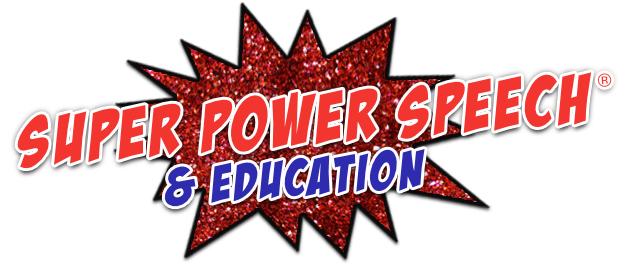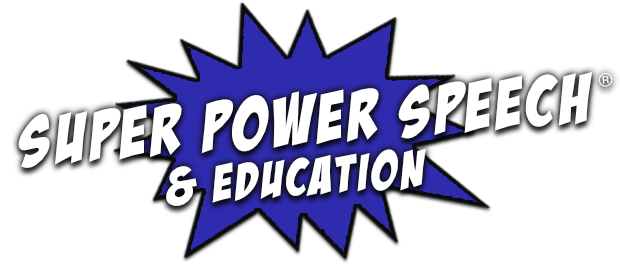Shared Reading as Evidence-Based Practice

Did you know that shared storybook reading is an evidence-based practice for increasing expressive language skills? Not only does
Single subject case studies have found that shared storybook reading can result in significant expressive language increases for children with:
- developmental disability (Binger, Kent-Walsh, Ewing, & Taylor, 2010; Douglas, McNaughton, & Light, 2013; Light, Binger, & Smith, 1994)
- Down syndrome (Kent-Walsh, Binger, & Hasham, 2010)
- autism spectrum disorders (Douglas et al., 2013; Yorke, Light, Gosnell Caron, McNaughton, & Drager, 2018)
- cerebral palsy (Binger et al., 2010; Light et al.,1994)
- language impairment (Crowe, Norris, & Hoffman, 2004)
So… what do I need to do for successful shared reading?
The best part about shared reading interactions is that it is so easy to implement! Research studies have shown that rather than just reading a book straight through, adults should:
- Ask open-ended questions while reading (Binger, Kent-Walsh, Berens, Del Campo, & Rivera, 2008; Binger et al., 2010, Light et al., 1994). These could include, “What do you think will happen?” “Where did he get that?” “What do you think about this?”
- Pause after asking questions (Binger et al., 2008; Binger et al., 2010; Douglas et al., 2013). Sometimes we want to answer our own questions or provide little wait time, this is especially true for adult working with children with a slow response time. However, pausing is a crucial step to allow all children time to know it is their turn to communicate and formulate a message.
- Respond to communication attempts or answers by children (Binger et al., 2010; Douglas et al., 2013; Crowe, Norris, & Hoffman, 2004). Responses are a way of closing the communication turn and
acknowledging the communication attempt of the child. These could be verbal such as, “I agree,” or nonverbal such as a smile or gesture.
Are you interested in reading more about the specific studies regarding shared reading? Here are just a few!
In a study by Binger, Kent-Walsh, Ewing, and Taylor (2010),
The paraeducators were trained on the RAAP strategy (Binger et al., 2010):
- Read: the adult reads the book text and provides a multi-symbol AAC model using the AAC device
- Ask: the adult asks a wh-question and provides a multi-symbol AAC model
- Answer: the adult answers the wh-question and provides a multi-symbol AAC model
- Prompt: the adult provides a verbal prompt such as “your turn” or “show me”
As a result of the paraeducator training and use of the RAAP model, all three children in the study increased their multi-symbol messages during the intervention, generalization, and maintenance phases.
In a study by Crowe, Norris, and Hoffman (2004), caregivers were trained to use a specific interactive reading routine with their child. The dependent variables included the number of communication turns, the total number of words, and the number of different words produced. Measurements were taken at baseline, during training, and finally during follow-up.
Caregivers were trained in the four elements of the Complete Reading Cycle (CRC) (Crowe, 1996):
- “Attentional Vocative” establishes joint attention to the books through verbal or nonverbal initiation. This component could include saying “look”, gesturing, or pointing.
- “Query” demonstrates any act to request information to be shared and to signal that the listener takes a communicative turn. These might include “What is that?” as well as “What will happen now?”
- “Response” includes any response to a query such as verbal words, pointing, gesturing, or signing.
- “Feedback” is a comment demonstrating that the response was heard.
As a result of the CRC training, all children in the study increased the number of communicative turns, increased the number of different words used, and five out of six children
What are ways to increase communication strategies at home and school while reading?
There are so many actionable steps you can use to promote expressive language with shared book reading interactions, but these are a few of my favorites:
- Train staff and caregivers to effectively model language with AAC.
- Use colorful and fun short stories to capture the attention of students.
- Provide specific vocabulary for the stories on paper or within speech-generating device vocabulary sets.
- Repeat book readings two to three times (but not more than three based on possible fatigue or lack of interest).
So what picture books should I use with my students who experience language delay?
There are too many great books to list! Click (affiliate link) here to check out some of my favorites. For a few of these fabulous picture books, I created light tech communication boards, so you are ready to begin your shared reading right away!
But if you are wondering about adapting books for AAC, have no fear! Below you can find sets of books that I have
- Core Word of the Week books
are extremely simple books that use repetitive lines and core vocabulary to teach early language learners. These books are included in my “Core Word of the Week Curriculum”. - A-Z Alphabet Books for Me includes 26 unique books that focus on one letter per book. They include simple stories and core board to model language for all students. These are perfect for preschool and early language learners!
Have fun and happy reading friends!
References
Binger, C., Kent-Walsh, J., Berens, J., Del Campo, S., & Rivera, D. (2008). Teaching Latino parents to support the multi-symbol message productions of their children who require AAC. Augmentative and Alternative Communication, 24(4), 323-338.
Binger, C., Kent-Walsh, J., Ewing, C., & Taylor, S. (2010). Teaching educational assistants to facilitate the multisymbol message productions of young students who require augmentative and alternative communication. American Journal of Speech-Language Pathology, 19(2), 108-120.
Crowe, L. K. (1996). Training Parents to Facilitate Language Through Storybook Reading.
Crowe, L. K., Norris, J. A., & Hoffman, P. R. (2004). Training caregivers to facilitate communicative participation of preschool children with language impairment during storybook reading. Journal of Communication Disorders, 37(2), 177-196.
Douglas, S. N., McNaughton, D., & Light, J. (2013). Online training for paraeducators to support the communication of young children. Journal of Early Intervention, 35(3), 223-242.
Kent-Walsh, J., Binger, C., & Hasham, Z. (2010). Effects of parent instruction on the symbolic communication of children using augmentative and alternative communication during storybook reading. American Journal of Speech-Language Pathology, 19(2), 97-107.
Light, J., Binger, C., & Smith, A. K. (1994). Story reading interactions between preschoolers who use AAC and their mothers. Augmentative and alternative communication, 10(4), 255-268.
Yorke, A. M., Light, J. C., Gosnell Caron, J., McNaughton, D. B., & Drager, K. D. (2018). The effects of explicit instruction in academic vocabulary during shared book reading on the receptive vocabulary of children with complex communication needs. Augmentative and Alternative Communication, 1-13.







